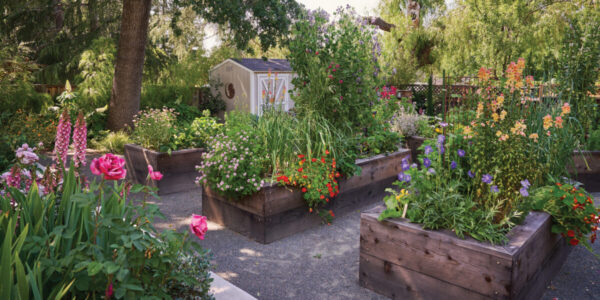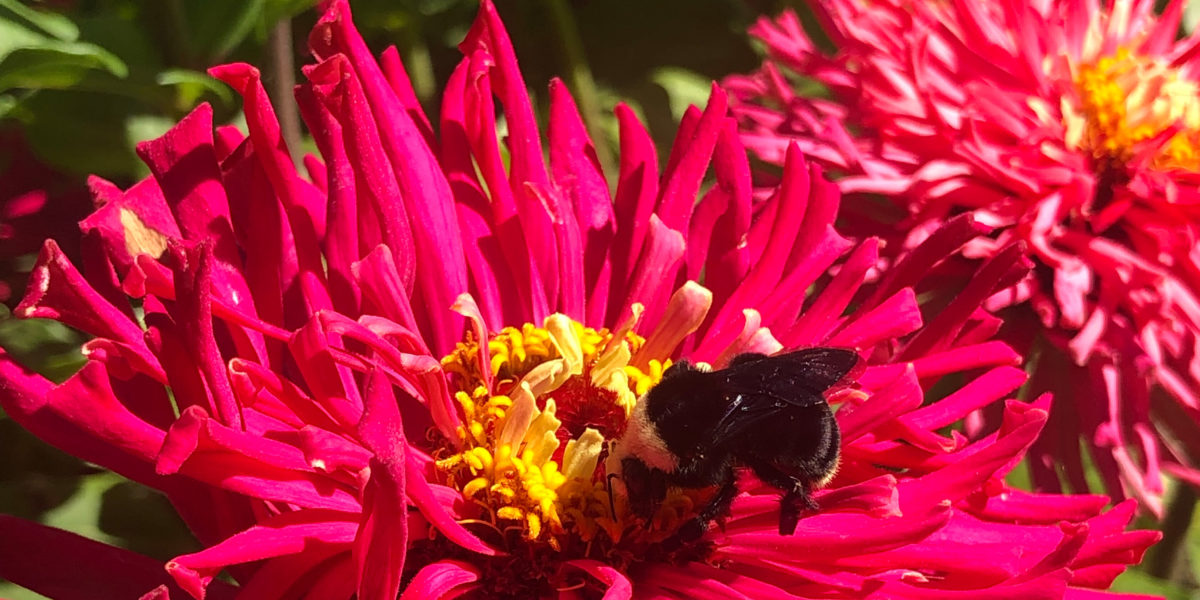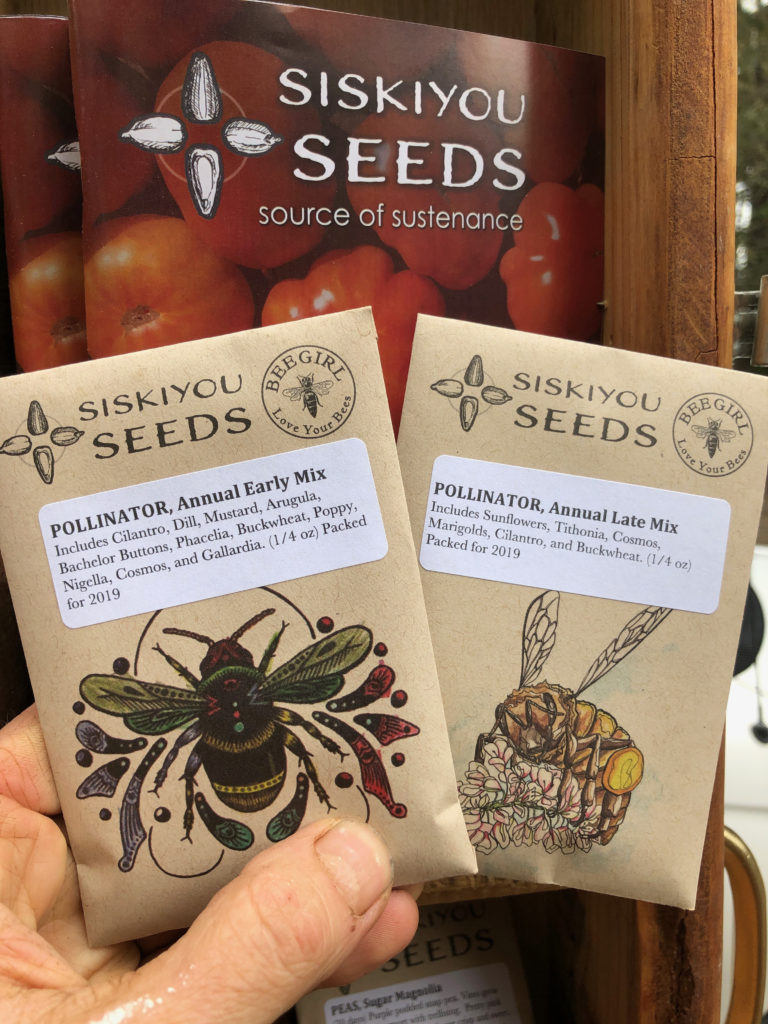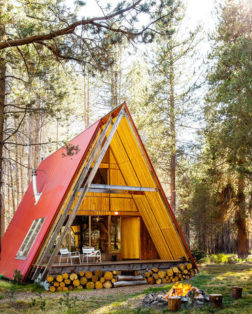
Pests Poking at Your Garden? This Expert Knows What to Do
Gardening expert Don Tipping shares with us tips on making your garden an environment where beneficial insects and pollinators want to live—and pests don’t.

The following is excerpted from our newsletter, “Sunset 101: The Ultimate Guide to Raised Beds.” To find out more about Sunset’s newsletters, click here.
Don Tipping began his seed company, Seven Seeds Farm, in 1997 with his family in Southwest Oregon. He became an expert in breeding plant varieties and seeds, leading him to launch Siskiyou Seeds, a subset of the company that sells hundreds of different fruit, vegetable, and flower seeds.
Tipping’s best advice for new gardeners is to simply be in the garden. “We’re so prone to just do something, but we learn a lot just by watching,” Tipping says. By immersing himself in his garden, Tipping finds he’s better able to understand how pests and pollinators interact with his plants. “I spend time just observing and I notice a lot of things, and then when we move into action we’re going from a place of deeper reverence and more thoughtfulness.”
We spoke with Tipping about how to attract pollinators and keep away pests from your raised bed. From honoring the often misunderstood earthworm to installing wire to keep away gophers, Tipping explains the best way to create your own ecosystem.
How do you care for your garden with pests?
On this topic of pests, the most important thing rather than addressing things symptomatically is to think of your garden as a garden ecology, as an ecosystem. There are many beneficial insects out there, and there are hawks and owls that will deter other animals from attacking your plants. It’s beneficial to think about how we can foster that ecology, and you’ll see things going around garden publications saying, ‘Hey a lot of insects are still hibernating, so be careful before you rake up leaves or mulch because you can find egg cases.’
Permaculture has this saying to approach things from patterns to details. Look at the garden ecology and ask yourself if you have perennials or wood plants that you shouldn’t disturb, and ask what is flowering on the landscape for as long as possible to be the nectar sources for not only pollinators but also beneficial insects.

Don Tipping
What are the common pests that will target an edible garden?
Well a lot of it depends on seasons, and there are certain pests that are specific to certain regions of the country. In the Pacific Northwest and the general West, we have a rainy season in the winter and spring. A lot of the plants, because the days haven’t gotten longer and the nights are colder, aren’t growing as rapidly, and a fast growing plant can tolerate more pests.
A lot of the things we deal with here are slugs and birds, and having a seed company, we get a lot of questions and concerns about what happens with their seeds. I tell them to sit outside and watch, and the best fertilizer is the gardener’s shadow. There can be, at first light at sunrise, birds picking up the seedlings, and when you go out at night, you’ll see slugs. You also have flea beetles and cucumber beetles, which are the number one agricultural pest in the country and they wake up later when the temperatures heat up.
What helps pollinators and beneficial insects live in your garden bed?
You have to leave your garden a little messy. Don’t make it too clean because you have to make room for the things that you don’t see there. Many beneficial insects forage on nectar, but in their younger stage they focus on insects—many predatory wasps and ladybugs are like this. There’s a predatory wasp that’s really small and you rarely notice them because they look like fruit flies. They lay their eggs on aphids and they consume the aphid from inside out, and when you really get up and look at it, you’ll see green aphids, which are more of a summer time issue, but then you’ll see these ones that have been parasitized by predatory wasps.
Earthworms are an intrinsically beneficial element of any garden, they turn organic matter into soil, and Darwin even wrote a whole book about them. Dr. Elaine Ingham coined the term the “soil food web,” she said that healthy organic soil is half dead invertebrates and their poop, that’s a lot of earthworms and microorganisms, and half organic soil.
With all of these things you’re creating a garden agriculture ecosystem, and that’s where instead of saying organic you say agroecology, and the more that we can see that and grasp it, they become more productive but also more beautiful because they become a natural ecosystem.

Don Tipping
How do you recommend keeping pests out of raised beds and your garden in general?
Raised beds give you an extra opportunity because you can use hardware cloth or open wire and that allows it to be open to the earth and allows water and microorganisms to move up and down, but not gophers. So when you’re constructing those raised beds, it’s a small expense to hammer on some wire that’s at least an inch thick, like aviary wire or cloth, that keeps gophers out at least. Also, row covers made out of spun polyester, which are at most garden centers, allow light and water to penetrate and not only keep frost off your plants but also birds.
If you think you have gophers and you see mounds, they have a characteristic horseshoe shape to their mounds, whereas a mole makes more of a pure middle mound like a conic shape. Gophers are herbivores and moles eat worms and vertebrates, so I have cats that will wait for gophers. It comes down to how much you are willing to let nature run its course.
Cats and dogs are good not only around gophers and moles, but also ground squirrels and rabbits. Some people use wildlife cams to identify what they have. Most importantly, plant enough so there’s enough for everything. Plant for abundance to provide for the ecology to make everything work. If you have a limited space with a bed, you can still put up owl boxes and bat boxes, or plant some catnip to bring in cats.
What is your favorite vegetable to grow?
I think it’s corn, whether that’s sweet corn or flour corn because it starts as such a small seed and grows to anywhere between five to ten feet tall. I find it really rewarding to watch it grow and the corn can be delicious.

Follow Sunset on Social Media
Find us everywhere:
- Twitter: @sunset
- Facebook: @SunsetMagazine
- Instagram: @sunsetmag
- Pinterest: @sunsetmag
- Flipboard: @SunsetMagazine
What are your favorite garden tools?
My favorite gardening tool is probably a felco hand pruner that I’ve had for 30 years. It’s a $60 investment that paid for itself for harvesting and cutting back blackberries. I really like these small Japanese hand tools called Hida and they have little hand hoes that can enable you to dig out deeply rooted weeds like madlock and can be used for making little furrows for seedlings. Long handled tools are great, but my favorite type of gardening is crawling around on my hands and knees, so having tools and holsters right there is helpful. I spray paint neon colors on the handles because it’s so easy to set that stuff down and lose them, but this lets me see them easier because they don’t blend in with the dirt and plants.
What gardening tip do you recommend for first time gardeners?
I think going back to permaculture is to stay in observation as long as possible. In America in particular, we’re so prone to just do something, but we learn a lot just by watching. I spend time just observing and I notice a lot of things, and when we move into action then we’re going from a place of deeper reverence and more thoughtfulness.
To subscribe to “Sunset 101: The Ultimate Guide to Raised Beds,” click here.
Read the Current Issue Here!
Get one year of Sunset—and all kinds of bonuses—for just $24.95. Subscribe now!
